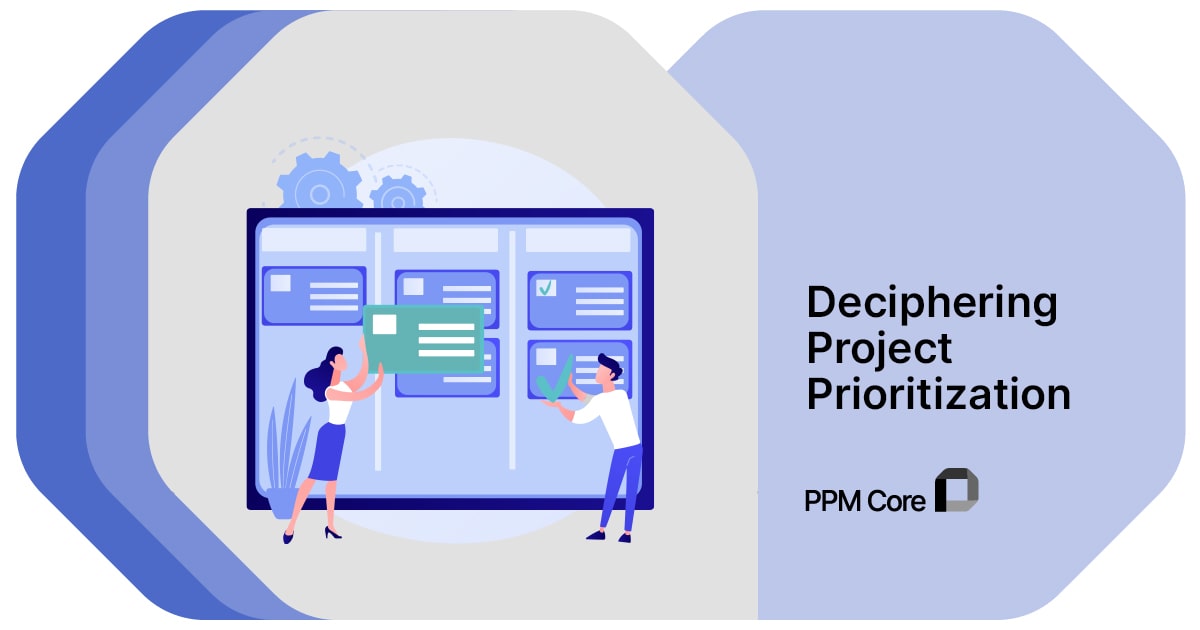Priority Matrix – Deciphering Project Prioritization
Project management is a dynamic discipline that requires professionals to allocate limited resources efficiently. A good analogy is to consider the project objective as a bet by the organization in the estimation that the expenditure will be offset by a more significant benefit than the expense.
To that end, identifying high-priority projects is one of the most critical aspects of the project selection process. This article will explore what makes a project a high priority, focusing on two key categories: business case projects and strategic projects.
The Anatomy of High-Priority Projects
From experience, companies have mechanisms for evaluating the potential work considered for undertaking. The available talent and investment funds limit the work a company can undertake. In our bet analogy, the company must evaluate which provides the biggest bang for the buck or work most likely to lead to continued organizational success. It is prudent for the organization to apply these assets to the most productive short- or long-term opportunities. However, how would we know?
Business Case Projects
There are mathematical models for making the business case; we list the more common ones below.
| Return on Investment (ROI) | Cost-Benefit Analysis (CBA) |
| Net Present Value (NPV) | Benefit-Cost Ratio (BCR) |
| Internal Rate of Return (IRR) | Break-Even Analysis |
| Payback Period | Clear Valuation Proposition |
No matter the economic and valuation model, the objective is to evaluate the opportunity economically. These projects should directly contribute to the bottom line through increased revenue, cost reduction, or improved customer satisfaction. Prioritizing projects with a strong business case ensures that the organization’s resources are invested wisely.
However, there are failures associated with the economic – check out the sunk cost fallacy.
Alignment with Organizational Goals
It is easier to prioritize economic projects, well maybe, since the evaluation mechanism is the tangible economic model. Economic models support the company’s mission, vision, and values. Before greenlighting a project, assessing whether it directly contributes to the organization’s financial goals is crucial.
Urgency and Timeliness
Business case projects often have a sense of urgency. A well-defined (perhaps not delusional) compelling economic rationale for undertaking the project exists, adding a sense of urgency. This urgency usually manifested as a specific delivery date via customer demand, launch demonstration, or other high-value marketing event. Thus, these projects address immediate business needs or capitalize on time-sensitive, for example, customer opportunities or regulatory deadlines. Identifying projects that cannot afford delays is a critical factor in prioritization.
Risk Assessment and Mitigation
Our evaluation should go beyond that of the economics of the project. Perhaps a project offers a tremendous economic boon to the company. The risks associated with the project may be so high that the likelihood of achieving that financial benefit is low. Therefore, our prioritization must go beyond the business case projects, including a thorough risk assessment. While all projects carry some level of risk, those deemed high priority have a thorough exploration of the risks and a well-defined risk mitigation plan. This proactive approach ensures that potential roadblocks are addressed promptly.
Stakeholder Buy-In
No matter the business case prioritization schema, a successful project requires buy-in from key stakeholders, including executives, sponsors, and project teams. High-priority business case projects have strong support from these groups, facilitating smoother project execution and quick resolution of organizational constraints.
Strategic Projects
The next category of prioritization is the strategic project. The justification for these projects flies loosely or free from an economic model. I have friends (yes, I do) who suggest RUN when you hear the project is strategic rather than based on economics. The potential project’s sales volume and profitability may not be easily calculated. There are reasons for that. The organization undertakes strategic projects to move the company into new markets or apply a new technology or an entirely new product from the company’s repertoire.
Alignment with Long-Term Strategy
Strategic projects are inherently high-priority because they directly align with an organization’s long-term strategy. These projects are crucial for the company’s future success and competitiveness in the market.
Competitive Advantage
Strategic projects often focus on gaining a competitive edge mid to long term. This could involve developing innovative products or services, expanding into new markets, or adopting advanced or emerging technologies. Prioritizing such projects ensures the organization remains relevant and ahead of the competition. These projects represent an opportunity to differentiate the company from its competition. However, the associated risks are higher since these projects are a bit disconnected to an immediate business case and more speculative (new or emergent technology application).
Resource Allocation
Allocating resources to strategic projects is a clear indicator of their high priority. Strategic projects may have to battle internal company politics. Ideally, these projects receive the best talent, technology, and financial support. No matter the politics, resource allocation should be strategic and balanced to avoid neglecting other critical projects in the business portfolio.
Measurable Outcomes
Strategic projects should have measurable outcomes and key performance indicators (KPIs) to track progress and success. From experience, the lack of measurable results confounds strategic projects but is not relegated solely to these projects. In fairness, a lack of defined success criteria is the source of project failures. These metrics allow organizations to assess whether the project delivers the expected strategic benefits. This is often more difficult for strategic projects (especially in light of the difficulty of making or outright ignoring a business model).
Adaptability and Flexibility
While strategic projects are vital for long-term success, they should also be adaptable to changing market conditions. Organizations should be ready to pivot without compromising the overall strategic vision.
Tools to Help with Project Prioritization
Priority Matrixes
Priority matrix is a simple tool that can be used to incorporate a structured approach in evaluating the priority of projects and multiple factors during prioritization of projects. In essence, the matrix lays down multiple variables associated to the project in a visually understandable format that allows teams to better define priorities.

Do you find this article interesting?
Subscribe to our Newsletter for updates on the latest blog articles.
A prioritization matrix can have multiple formats, looks and different levels of complexity. Common examples include:
- Scoring Models
- Eisenhower Matrix
- Pairwise Comparison
- Six Sigma and others
PPM Software
In addition to priority matrices, project portfolio management software is often used to help with project prioritization.
PPM Core is an example of a project portfolio management software that features a unique project PPM module that allows users to have clear overview of all the projects, as well as organize projects in portfolios.
With PPM Core, users can efficiently monitor project performance, as well as compare project’s progress versus planned data. Additionally, they can compare multiple projects in one view, tracking the most important project metrics. This helps users prioritize project activities and prevent risks.
A project scorecard to help with prioritization of projects is also included.
PPM Core also offers a phase gate model and tabular view on the projects. Users can see all relevant data at a glance and make decisions to optimize the portfolio. Filtering options also allow users to decide which projects they’d like to compare and on which measurable criteria.
The tabular view offers clarity in spotting patterns and increase or decrease in the project’s performance.
To explore PPM Core and arrange a brief online demo presentation, please visit our website.
The Art of Identifying High-Priority Projects
There are generally two categories of project prioritization: economic model and strategic objective. How we undertake the project, the approach, measurements, and controls should be commensurate with the project category.
Business case and strategic projects are two distinct categories that often overlap in prioritization. Both should undergo rigorous evaluation to determine their fit within the organization’s project portfolio. The organization should balance these two categories, with particular attention to internal conflicts supporting these categories.
Successful project prioritization hinges on distinguishing between projects that are merely important and those that are genuinely high-priority. Organizations can allocate resources wisely, enhance competitiveness, and achieve long-term goals by focusing on the business case and strategic alignment. Remember, the key to successful project management lies not only in doing projects right but also in doing suitable projects.
About the Author
Jon M. Quigley PMP CTFL is a principal and founding member of Value Transformation, a product development training (from idea to product retirement) and cost improvement organization established in 2009.

